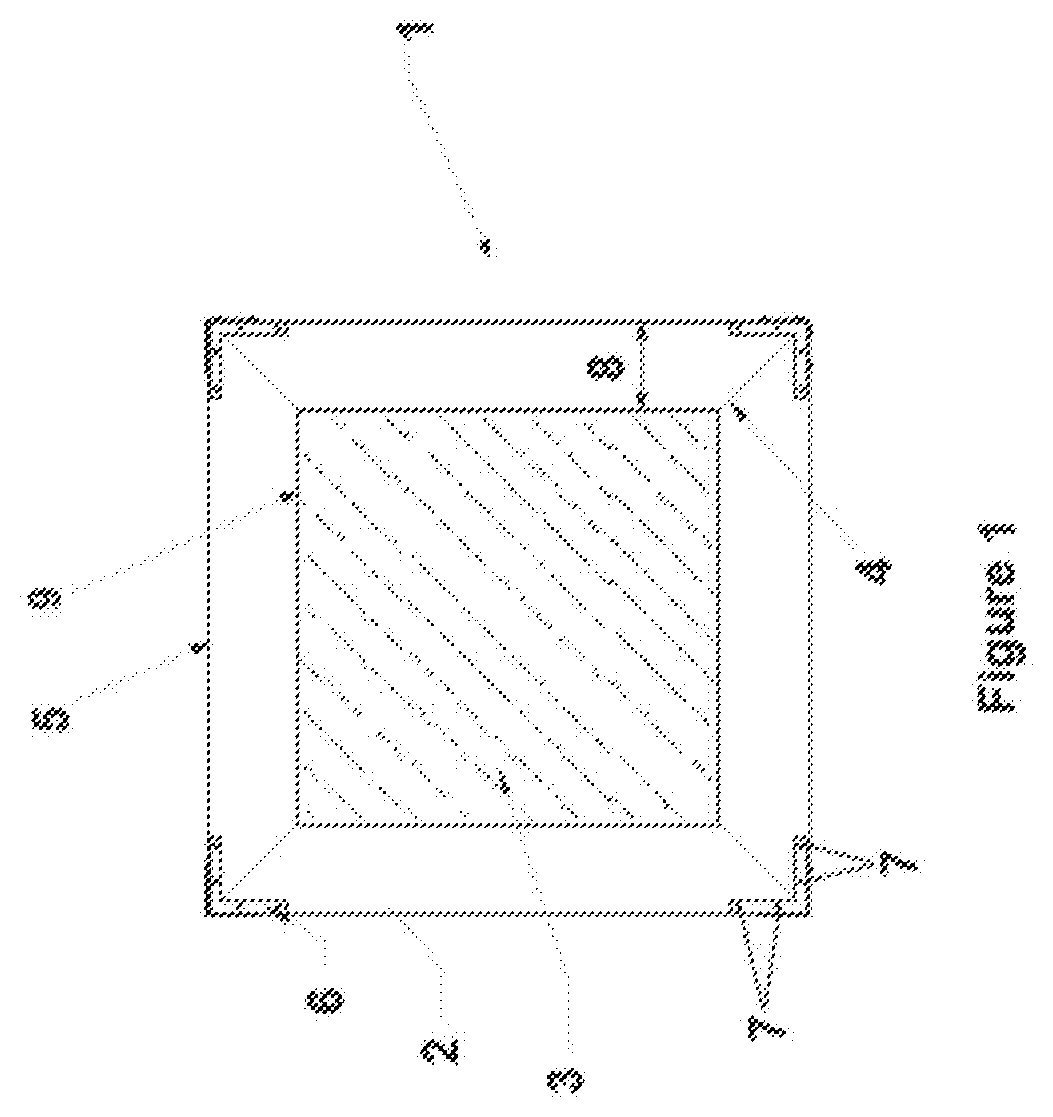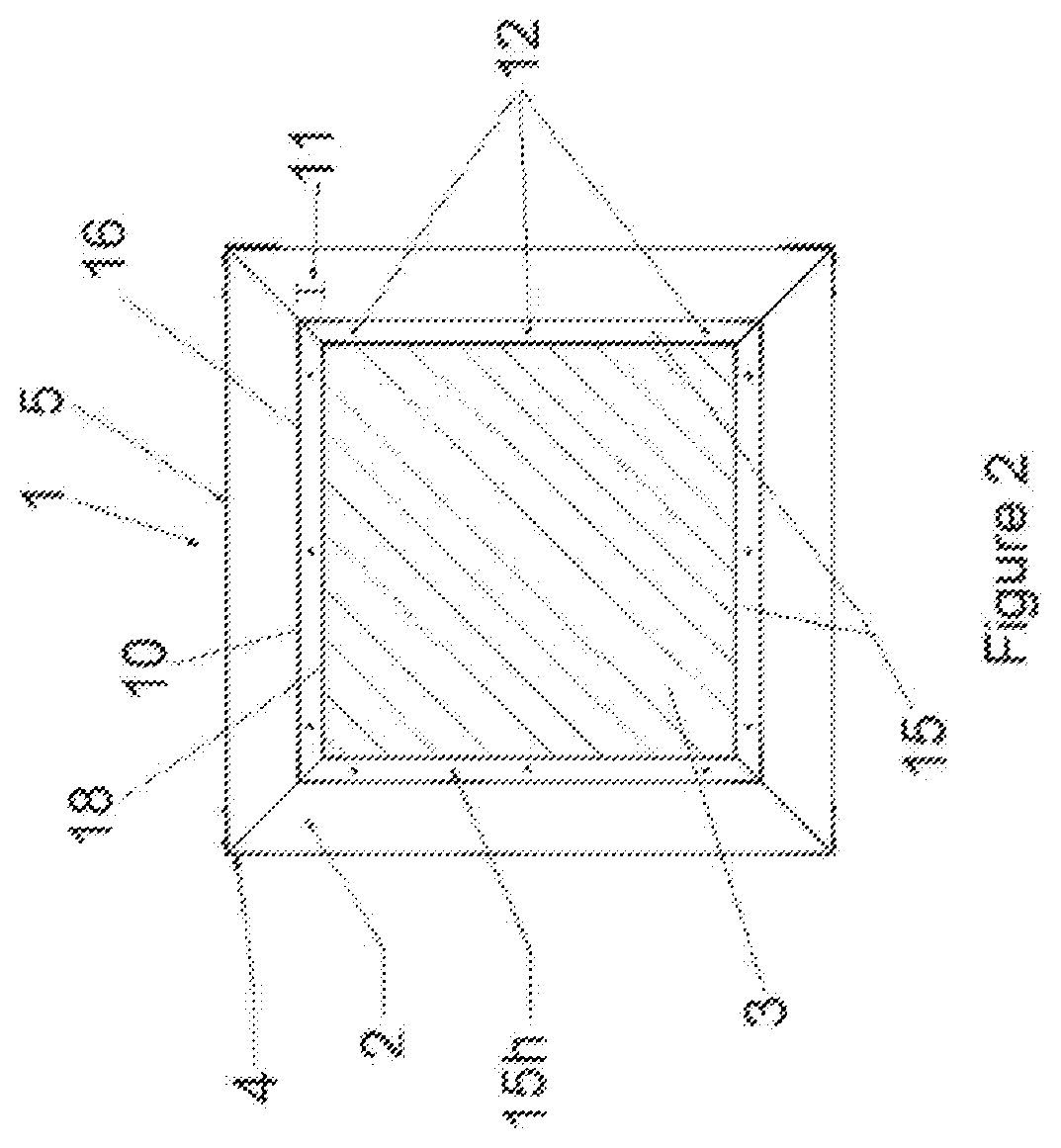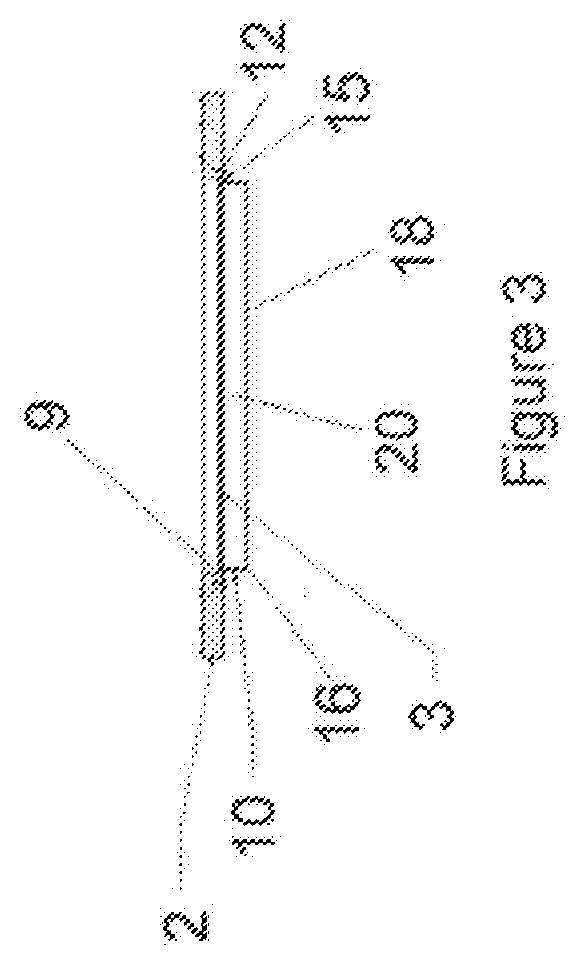Apparatus and method for soil stabilization
a soil stabilization and apparatus technology, applied in the field of solarization, can solve the problems of limiting the depth of effective treatment, reducing the effect of solar flux, and reducing so as to reduce the amount of weeds, the effect of limiting heat loss and increasing solar flux
- Summary
- Abstract
- Description
- Claims
- Application Information
AI Technical Summary
Benefits of technology
Problems solved by technology
Method used
Image
Examples
Embodiment Construction
[0036]With referring to the drawings, generally, like reference numerals designate identical or corresponding parts throughout the several views of embodiments of an exemplary apparatus for solarizing an area of soil.
[0037]The illustrated embodiments describe an apparatus comprising multiple component parts which can be cast, molded, 3D printed, sintered or machined from fewer pieces or even a single piece of material.
[0038]FIGS. 1-4 provide partial views of an embodiment of a solarizer 1 according to the present invention showing a support base 5 without illustrating an optional overlying reflective / diffusive assembly attached to the base. The support base 5, in the form of a square frame, defines the length and width of a first opening 9 through which solar radiation can be received. The base comprises four interconnected trapezoidal support members 2 rendering the first opening 9 in a square shape having, for example, ˜610 mmט610 mm (24 in.×24 in.) sides. The size of the first o...
PUM
 Login to View More
Login to View More Abstract
Description
Claims
Application Information
 Login to View More
Login to View More - R&D
- Intellectual Property
- Life Sciences
- Materials
- Tech Scout
- Unparalleled Data Quality
- Higher Quality Content
- 60% Fewer Hallucinations
Browse by: Latest US Patents, China's latest patents, Technical Efficacy Thesaurus, Application Domain, Technology Topic, Popular Technical Reports.
© 2025 PatSnap. All rights reserved.Legal|Privacy policy|Modern Slavery Act Transparency Statement|Sitemap|About US| Contact US: help@patsnap.com



